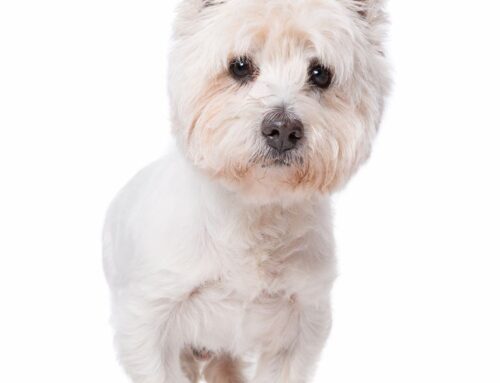Are you considering adding a new furry member to your family? If you’re looking for a loyal, energetic, and intelligent companion, an Australian Kelpie might be the perfect match for you. This breed is known for its working abilities, but they also make great family pets. With their high energy levels and intelligence, they require plenty of physical and mental stimulation to be happy and healthy. In this article, we’ll explore the Australian Kelpie breed and what to expect if you decide to bring one into your home.
Breed Category: Herding
Country of Origin: Australia
Average Size:46-51 cm
Average Weight:14-20 kg
Average Life Span: 12-16 years
Grooming Requirements: Low
Exercise Requirements:High
History and Origin
The Australian Kelpie is a breed of dog that originated in Australia in the late 19th century. The breed was developed to work on farms and ranches, herding sheep and cattle. The Kelpie is a highly intelligent and energetic breed, known for its ability to work tirelessly for long hours. The breed is also known for its loyalty and devotion to its owner.
The origins of the Australian Kelpie are somewhat unclear, but it is believed that the breed was developed from a mix of Scottish Collies and other working breeds, such as the Dingo and the Border Collie. The breed was first developed in the 1870s by a man named Jack Gleeson, who lived in the Kelpie district of Victoria, Australia. Gleeson is said to have bred a black and tan Collie with a Dingo, resulting in a dog that was highly skilled at herding sheep.
The breed was named after the Kelpie district where it was first developed, and it quickly gained popularity among farmers and ranchers throughout Australia. The Kelpie was particularly well-suited to the harsh Australian climate, as it was able to work for long hours in hot and dry conditions. The breed was also highly adaptable, able to work with a variety of different types of livestock.
In the early 20th century, the Australian Kelpie was exported to other countries, including the United States and the United Kingdom. The breed quickly gained a reputation as a highly skilled working dog, and it was used on farms and ranches around the world. Today, the Australian Kelpie is still used for herding livestock, but it is also a popular companion dog. The breed is known for its high energy and intelligence, and it requires a lot of exercise and mental stimulation to stay happy and healthy.
In recent years, the Australian Kelpie has become increasingly popular as a competitive dog sport, particularly in agility and obedience competitions. The breed’s intelligence and athleticism make it well-suited to these types of activities, and many Kelpies have excelled in these sports. Despite its popularity, however, the Australian Kelpie remains a relatively rare breed outside of Australia.
Overall, the Australian Kelpie is a fascinating breed with a rich history and a bright future. From its humble beginnings in the Kelpie district of Victoria,

Size and Breed Category
The Australian Kelpie is a medium-sized breed of dog that originated in Australia. They are known for their agility, intelligence, and high energy levels. The breed typically weighs between 14-20 kg and stands at a height of 43-51 cm at the shoulder. Their coat is short and dense, and comes in a variety of colours including black, red, chocolate, and fawn. The Kelpie’s ears are pricked and their eyes are almond-shaped, giving them a sharp and alert appearance. They are classified as a herding breed, and are often used to work with livestock such as sheep and cattle.
The Australian Kelpie is a member of the pastoral breed group, which includes other herding breeds such as the Border Collie and the Australian Cattle Dog. They are highly intelligent and require plenty of mental and physical stimulation to keep them happy and healthy. Kelpies are known for their loyalty and devotion to their owners, and make excellent companions for those who are willing to put in the time and effort to train and socialize them properly. They are also highly adaptable and can thrive in a variety of environments, from rural farms to urban apartments. Overall, the Australian Kelpie is a versatile and hardworking breed that is well-suited to a variety of lifestyles.
Fur Length and Colour
The fur of the Australian Kelpie is typically short and dense, providing excellent protection against the harsh Australian climate. The fur is also water-resistant, which is particularly useful for a breed that was originally bred for herding livestock in wet and muddy conditions. The fur can come in a range of colours, including black, red, chocolate, fawn, and blue. Some Kelpies may also have white markings on their chest, feet, or face. The fur colour can vary within a litter, with some puppies being born with a darker or lighter coat than their siblings. Overall, the fur of the Australian Kelpie is an important feature that helps them to thrive in their working environment.
The colour of the Australian Kelpie’s fur can have an impact on their working ability. For example, a black Kelpie may be better suited to working in hot conditions as their fur absorbs less heat than a lighter coloured Kelpie. On the other hand, a lighter coloured Kelpie may be better suited to working in cooler conditions as their fur reflects more heat. The colour of the fur can also affect the Kelpie’s visibility, with a darker coloured Kelpie being less visible in low light conditions. However, the colour of the fur is not the only factor that determines a Kelpie’s working ability, as their intelligence, agility, and trainability are also important traits. Overall, the colour of the Australian Kelpie’s fur is an interesting and important aspect of their appearance.

Termperament and Trainability
Australian Kelpies are known for their high energy and intelligence. They are a breed that requires a lot of physical and mental stimulation to keep them happy and healthy. Kelpies are often used as working dogs on farms, as they have a natural instinct to herd and are highly trainable. They are also used in agility competitions and obedience trials, where their athleticism and intelligence are put to the test. Kelpies are known for their loyalty and devotion to their owners, and they thrive on human interaction and attention. However, they can be wary of strangers and may require socialization from a young age to prevent any aggressive behavior.
When it comes to training, Australian Kelpies are highly responsive and eager to please. They are quick learners and excel in obedience training, as well as agility and herding trials. Kelpies are known for their ability to problem-solve and think independently, which can make them challenging to train at times. However, with consistent and positive reinforcement, they can be trained to perform a wide range of tasks. Kelpies are also known for their high prey drive, which can make them unsuitable for homes with small pets. Overall, the Australian Kelpie is a highly trainable and intelligent breed that requires an experienced owner who can provide them with the physical and mental stimulation they need to thrive.

Known Health Conditions
Australian Kelpies are a breed of dog that are known to be prone to certain health conditions. One of the most common health issues that affect this breed is hip dysplasia. This condition occurs when the hip joint does not develop properly, leading to pain and discomfort for the dog. Australian Kelpies may also be at risk of developing eye problems such as cataracts and progressive retinal atrophy, which can lead to blindness if left untreated. Additionally, this breed may be prone to allergies and skin irritations, which can cause itching and discomfort. It is important for owners of Australian Kelpies to be aware of these potential health issues and to seek veterinary care if their dog shows any signs of discomfort or illness.
Another health condition that may affect Australian Kelpies is epilepsy. This neurological disorder can cause seizures and other symptoms, and may be genetic in nature. Australian Kelpies may also be at risk of developing certain types of cancer, such as lymphoma and hemangiosarcoma. Additionally, this breed may be prone to dental problems such as periodontal disease, which can lead to tooth loss and other complications. Regular dental care and veterinary check-ups are important for maintaining the health and well-being of Australian Kelpies. By being aware of these potential health issues and taking proactive steps to address them, owners can help ensure that their Australian Kelpie lives a long and healthy life.
Openness to Strangers
Australian Kelpies are known for their friendly and outgoing nature towards strangers. They are a breed that is always eager to meet new people and make new friends. This trait makes them excellent companions for those who enjoy socializing and meeting new people. Kelpies are also very curious and inquisitive, which means they are always exploring their surroundings and seeking out new experiences. This makes them great pets for families with children, as they are always up for a game or adventure.
In addition to their friendly nature, Australian Kelpies are also very intelligent and highly trainable. They are known for their ability to learn quickly and their willingness to please their owners. This makes them excellent working dogs, as they are able to learn and perform a wide range of tasks. Kelpies are often used as herding dogs, as they have a natural instinct to round up and control livestock. They are also used in search and rescue operations, as they are able to navigate difficult terrain and locate missing persons. Overall, the Australian Kelpie is a highly adaptable and versatile breed that is well-suited to a variety of different roles and environments.
Playfulness Level
The Australian Kelpie is a highly energetic and playful breed of dog. They are known for their love of physical activity and their ability to run and play for hours on end. This breed is particularly well-suited to outdoor activities such as hiking, running, and playing fetch. They are also highly intelligent and enjoy mental stimulation, making them excellent candidates for training and agility competitions.
Despite their high energy levels, Australian Kelpies are also known for their affectionate and loyal nature. They are highly social animals and thrive on human interaction, making them excellent family pets. However, due to their high energy levels, they may not be suitable for households with young children or elderly individuals who may not be able to keep up with their activity levels. Overall, the Australian Kelpie is a highly active and playful breed that requires plenty of exercise and mental stimulation to stay happy and healthy.
Suitability as a Pet for Children
Australian Kelpies are highly energetic and intelligent dogs that require plenty of exercise and mental stimulation. They are known for their loyalty and affection towards their owners, making them a great choice as a family pet. However, their high energy levels and strong herding instincts mean that they may not be suitable for families with very young children or those who are unable to provide them with the necessary exercise and training. With the right care and attention, Australian Kelpies can make wonderful companions for older children who are able to keep up with their active lifestyle.

Exercise Needs
Australian Kelpies are highly energetic dogs that require a lot of exercise to stay healthy and happy. They were originally bred to work on farms and ranches, herding livestock and helping with other tasks. As a result, they have a lot of stamina and need plenty of opportunities to run, play, and explore. Owners should plan to provide their Kelpies with at least an hour of exercise each day, although more is often better. This can include activities like long walks, runs, hikes, or games of fetch. Kelpies also enjoy participating in dog sports like agility, obedience, and flyball, which can provide mental stimulation as well as physical exercise.
In addition to regular exercise, Australian Kelpies also benefit from plenty of mental stimulation. They are intelligent dogs that enjoy learning new things and solving puzzles. Owners can provide mental stimulation by teaching their Kelpies new tricks, playing games like hide-and-seek, or providing puzzle toys that require problem-solving skills. Kelpies also enjoy spending time with their owners and participating in activities together, such as hiking or camping. Overall, Australian Kelpies are active, intelligent dogs that require plenty of exercise and mental stimulation to stay healthy and happy.

Suitability for a Multi-Pet Family
Australian Kelpies have a reputation for being highly energetic and intelligent. They are often used as working dogs on farms and ranches, where they excel at herding livestock. When it comes to getting along with other pets, it really depends on the individual dog and their socialization. Some Kelpies may be friendly and accepting of other animals, while others may have a strong prey drive and be more prone to chasing or attacking smaller pets. It’s important to introduce Kelpies to other pets gradually and under close supervision to ensure everyone’s safety.
Housing Requirements
Australian Kelpies require a living space that is large enough to accommodate their high energy levels. They are an active breed that needs plenty of exercise, so a house with a large backyard or access to open spaces is ideal. A minimum of 30 minutes of exercise per day is recommended, but they will happily take more. They are also known for their intelligence and need mental stimulation, so puzzle toys and training sessions are a great way to keep them occupied. In terms of sleeping arrangements, they are content with a comfortable bed or crate in a quiet area of the house.
When it comes to feeding, Australian Kelpies require a balanced diet that is appropriate for their age, weight, and activity level. They are not known to be picky eaters, but it is important to monitor their food intake to prevent obesity. Fresh water should always be available, especially during hot weather. Grooming requirements are minimal, with a weekly brush to remove loose hair and dirt being sufficient. They are a healthy breed with few genetic health issues, but regular vet check-ups are still recommended to ensure their overall well-being.
Summary
Australian Kelpies make great pets for active families who enjoy spending time outdoors. They are highly intelligent and require mental stimulation and physical exercise to keep them happy and healthy. With their high energy levels and natural herding instincts, they excel in activities such as agility, obedience, and flyball. However, they may not be suitable for households with small children or other pets, as their herding instincts may lead them to nip or chase. Overall, Australian Kelpies make loyal and loving companions for those who are willing to provide them with the exercise and mental stimulation they need.
Australian Kelpie Dog FAQS
Yes, Australian Kelpies are highly intelligent and trainable, but can be stubborn at times.
Yes, Australian Kelpies are generally good with children, but early socialization is important.
Australian Kelpies are high-energy dogs and require a lot of space to run and play, so they are not recommended for apartment living.
Australian Kelpies are known to be vocal and may bark if they are bored or not getting enough exercise.
Australian Kelpies are generally healthy, but can be prone to hip dysplasia and eye problems.
Australian Kelpies have a lifespan of 12-15 years on average.
Australian Kelpies are high-energy dogs and require at least 1-2 hours of exercise per day.
The amount of food depends on the dog’s size and activity level, but on average, they require 1-2 cups of food per day.
Australian Kelpies have a short, dense coat and only require occasional brushing.
The average weight of an Australian Kelpie is between 14-20 kg.






Leave A Comment